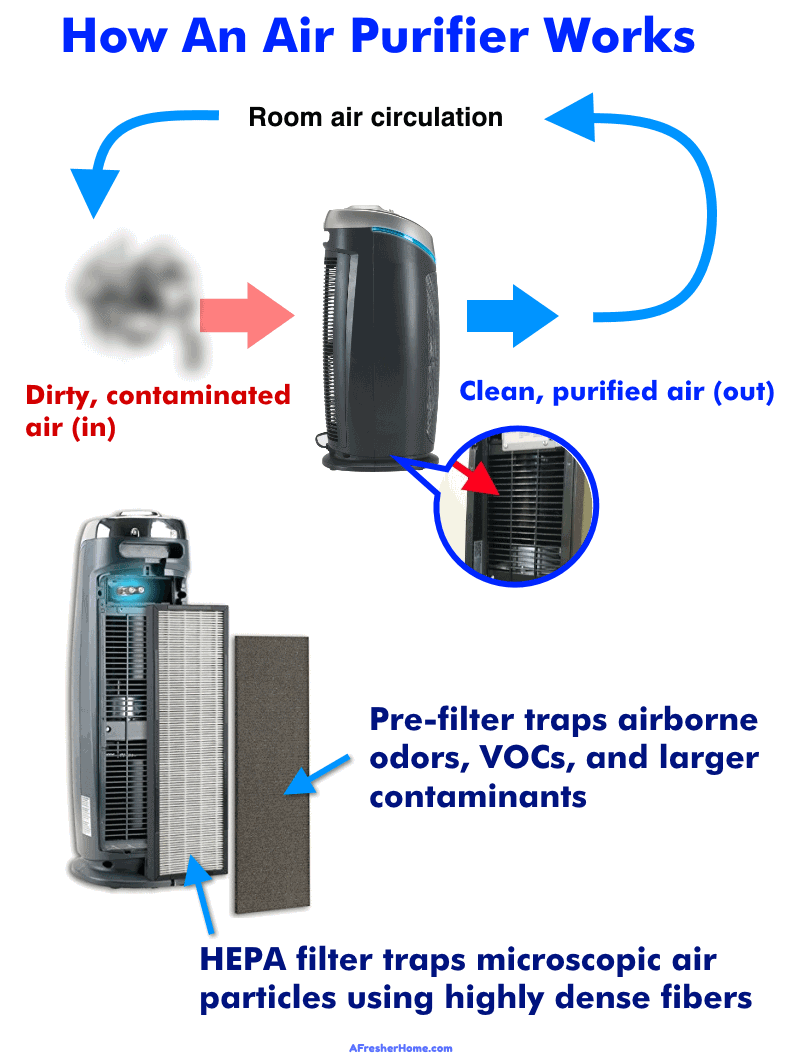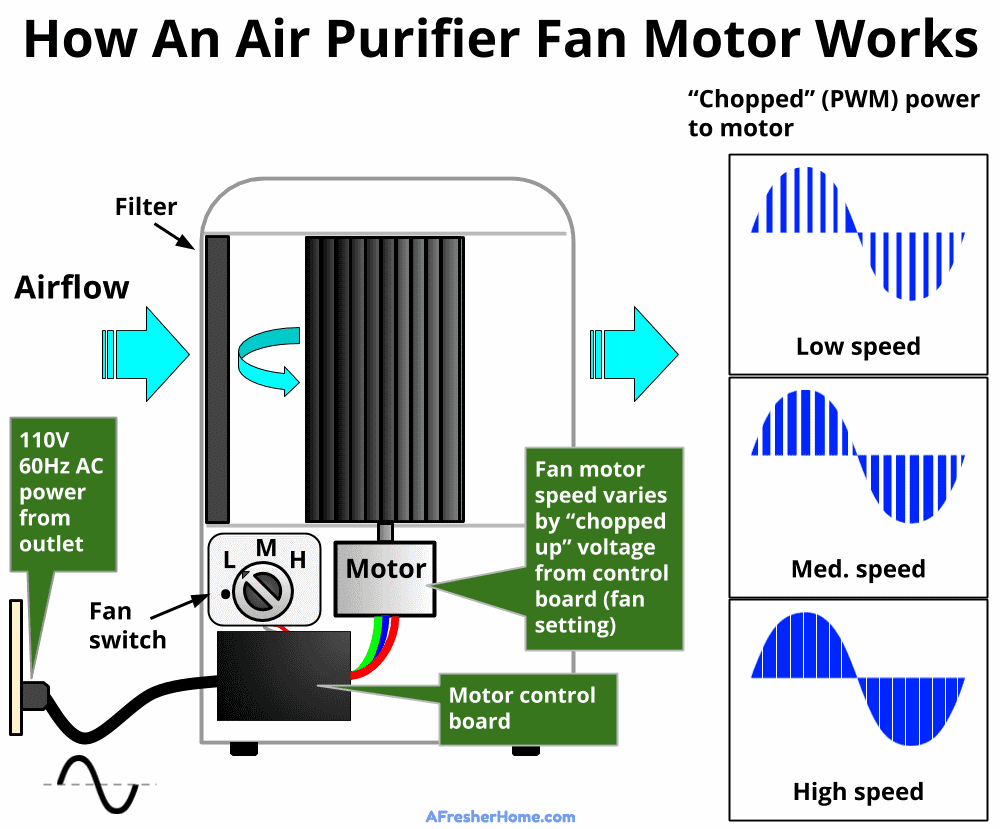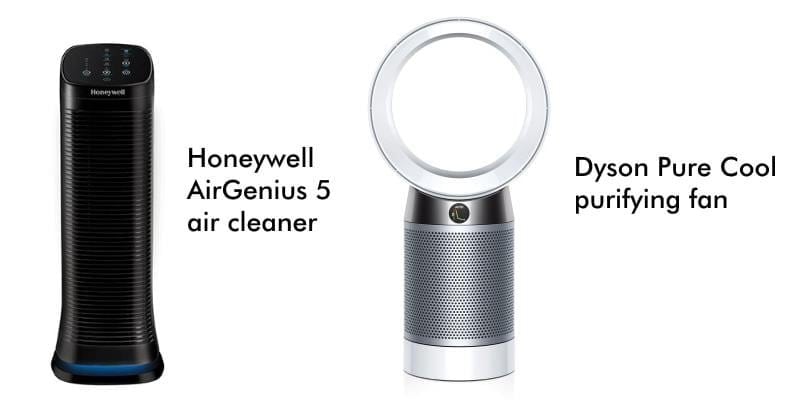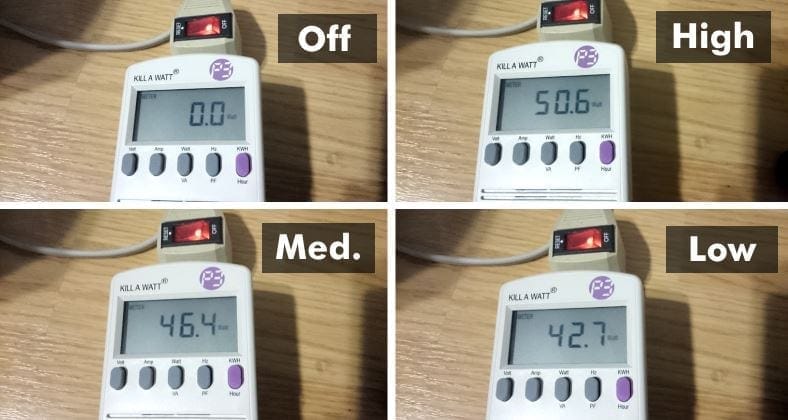Ever wondered what exactly an air purifier does to the room? And do air purifiers make the room hot? I’ll answer all that and much more here.
In this detailed article, I’ll explain whether or not they cool or heat a room, how they work, and the basics of air purifiers.
Contents
Do air purifiers make a room hot?
They use electric motors to spin fan blades but don’t produce heat into the air that would warm a room. An important thing to understand is that unlike electric fans, although they do use fans to move air, air purifiers don’t blow air directly across you in a room for cooling, either.
The electric motors they use barely get warm, if at all, because of how they work. (I’ll explain more below)
What exactly is an air purifier? How does an air purifier work?
Air purifiers work by moving air through filters that trap problem-causing particles in the air as the air moves through them. This permanently removes them from the air you breathe. Many also use a pre-filter section to capture larger particles like dust or hair before it reaches the High-Efficiency Particulate Air (HEPA) filter as well as to trap odors and airborne vapors.
As I mentioned above, air purifiers are air cleaning devices that use an electric motor and fan to circulate the air in a room and clean it. Air is forced through a series of replaceable filters where pollutants are trapped. The clean air then passes out through another side of the body.
As the process continues the air purifier will continuously cycle and filter bad elements and odors in a room. The result is fresh, clean, healthy air being left behind.
It can take anywhere from less than 1 hour to more than an hour to completely cycle the air in a room at least once. That depends on several things:
- The room’s size.
- An air purifier’s airflow rate and Clean Air Delivery Rate (CADR) determines how efficient it is at cleaning.
How air purifier motors work (and why they don’t add heat)
A diagram showing how most HEPA-type purifiers work. The fan motor has a speed that’s regulated by an electronic motor control board that rapidly turns power on and off to it. This allows it to regulate the speed, especially for low-speed, low-noise modes. Because of the rapid on/off switching the motor doesn’t get hot – in fact, it may barely become warm unlike other electric motors in appliances.
Air purifiers (in most cases) are different from many other types of electrically-powered devices with a motor. That’s because they don’t normally work at 100% full power or full speed for the motor. Instead, they use the alternating current (AC) power from your home’s electrical system to supply an electronic motor driver board.
This board then “chops up” the power voltage into a series of on/off pulses. The amount of time the board applies wider or shorter pulses controls the fan, making it go faster or slower. As air purifiers have selectable fan speeds, this means the control board can regulate the speed very precisely.
This type of technology is called Pulsed Width Modulation (PWM). It also means it’s possible to operate an air purifier in a very low-noise, low-speed mode that’s great for bedtime.
Why don’t air purifiers generate heat?
As I mentioned, the motors in most (not 100% of all sold) purifiers are supplied power in a super-fast on/off fashion. That means they don’t really have time to build up heat and run fairly cool. Because of that, they barely get warm, if at all.
Since they only circulate air and the motor & electronics run cool, they do not warm a room or add any noticeable heat.
Do air purifiers work as fans?
Air purifiers contain electric fans that draw in dirty air and blow out clean air. Left: This purifier (GermGuardian AC4825) uses a tall “tower” design with vertical fan blades called a centrifugal fan. Right: This Winix H900 purifier uses a circular fan for even more airflow, giving more powerful air movement.
As I mentioned at the beginning of my post, while air purifiers do contain fans it’s important to understand what they can and cannot do.
1. Unlike fans, the majority of air purifiers have filters that greatly slow the flow of air through them.
That’s why they’re not capable of moving enough air to cool you or your room. The rate depends upon the purifier’s fan speed and how much air it can move (the airflow rate, often expressed in cubic feet per minute [CFM]). The clean air exhaust side is also pointed outward in such a way that it’s only useful for recirculating air, not cooling the room.
They’re similar to fans in the sense that both cause the air in your room to circulate. Fans circulate air in a room as a side effect of how they work – often they’re used to blow air directly in order to keep things cool & comfortable.
2. Most purifiers aren’t designed with fans that can move enough air to cool a room.
Purifiers aren’t expected to clean all the air in a room rapidly. It can take anywhere from several hours to a few days depending on the product and the room size. Air purification is a process that takes time.
The type of air purifier (if it were designed for it intentionally) that could a huge amount of air quickly to both clean and cool a room isn’t what most people want or need. Most people wouldn’t be willing to pay for it either.
There are also some types that don’t have fans. These products don’t add to the normal circulation of air in a room, and thus don’t have the added function of a fan. Ionizers and some ozone generators are good examples of this type.
There are a few exceptions to the rule, however, that I’ll cover below.
Examples of air purifier and cooling fan combo products
A few products on the market actually do act as fans. The Honeywell AirGenius product family (left) and Dyson air purifiers like the Pure Cool purifying fan (right) create a very high airflow in a room much like a fan. In fact, some Dyson models are designed for this so they offer both cleaning and cooling.
While what you’ve read is true for most, there are a few exceptions to the rule. Some products like the Dyson Pure Cool purifying fan are designed specifically to move large amounts of air to help keep you cool & comfortable.
Others like the Honeywell Air Genius 5 have a different type of filter design which allows a high rate of air to blow just as a fan (and even oscillates side to side like a tower fan, too!).
Do air purifiers use a lot of electricity?
Example power measurements I made for a popular air purifier designed for medium-sized rooms (about 1`55 square feet). As you can see, it doesn’t use that much power even on the highest setting.
Air purifiers don’t typically use a lot of power: somewhere between 5W or 55W or so in my experience. Of course, it depends a lot on the particular model and its design. Smaller units will draw a bit less while some of the most popular models (usually for medium-sized rooms) are in the range I mentioned.
What’s interesting is that some of the more advanced models (for example, those for larger rooms and which have larger fans) have a “sleep” mode that draws on 5 to 10 watts. That allows them to keep the air cleaning working while avoiding making enough noise to disturb your sleep.
In general, in many cases, they still use less energy overall than say a ceiling fan or box fan (these are often 65W or higher) – and certainly much less than an air conditioner.






